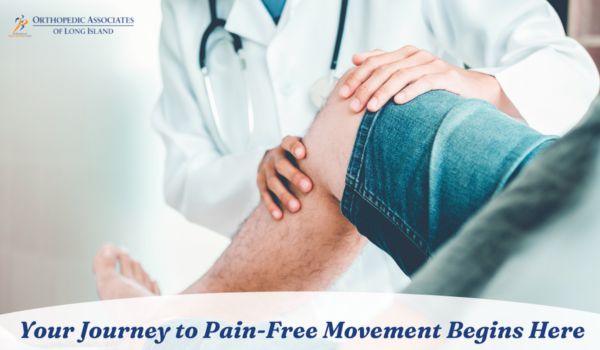Below is an easy-to-follow overview of key points concerning knee surgery, recognizing osteoarthritis symptoms, and understanding the recovery journey. Internal links to relevant OALI pages are included to help you explore more information on specific services and expert resources.
1. Understanding Knee Surgery Necessity
Knee replacement is a frequently performed orthopedic procedure—over 600,000 such surgeries are carried out every year in the United States. Surgery can be total or partial, depending on how badly the joint is damaged.
- Persistent Pain: When pain disrupts daily routines and conservative measures (like medication or physical therapy) fail, surgical options may be considered.
- Common Conditions: Osteoarthritis is a primary culprit, with cartilage wearing down over time, causing painful friction between bones.
- Pre-Operative Assessments: Comprehensive evaluation through imaging (e.g., X-rays, MRIs) and physical exams helps tailor treatments.
For more details on how OALI can assist with total joint replacement, visit our Considering Joint Replacement page or explore our Total Joint Replacement resources.
2. Understanding Osteoarthritis Symptoms
Osteoarthritis (OA) gradually worsens over time. Recognizing its early signs can safeguard the joint and improve quality of life.
- Pain: Often varies based on activity levels.
- Stiffness: Can be more pronounced in the morning or after remaining still for a while.
- Swelling: Joint inflammation may be visible and accompanied by tenderness.
Lifestyle factors, such as staying active and maintaining a balanced diet, can help manage OA symptoms. If you have concerns about bone and joint health, learn more about our comprehensive Services designed to address various orthopedic conditions.
3. When to Consider Surgery
Several factors come into play when deciding if surgery is necessary:
- Severity of Joint Damage: Determined via imaging (X-ray, MRI) to gauge the cartilage and bone condition.
- Impact on Daily Life: Persistent, debilitating pain can limit daily tasks.
- Non-Surgical Alternatives: Physical therapy and cortisone injections often provide relief before surgical options are explored.
- Risk-Benefit Analysis: Weighing potential complications and recovery timelines is critical.
- Patient Factors: Age, overall health, and activity level influence the decision, necessitating a tailored approach.
If you’re exploring non-surgical options first, our Non-Operative Sports Medicine page highlights how OALI specialists manage various joint issues without immediate surgery.
4. Signs You May Need a Replacement
Patients often recognize these indicators:
- Persistent Discomfort despite medication, injections, or therapy.
- Limited Mobility: Difficulties with stairs or walking tasks.
- Joint Stiffness after sitting or sleeping.
- Lifestyle Limitations: Reduced activity levels or avoidance of formerly enjoyable pursuits.
When conservative options are not sufficient and pain heavily diminishes mobility, a conversation about replacement may be warranted. Visit Our Physicians to meet OALI’s team of experts who can guide you through the evaluation process.
5. The Role of Physical Therapy in Recovery
Physical therapy is integral to post-surgery recovery, as well as managing conditions non-operatively:
- Targeted Exercises: Strength training and range-of-motion drills rebuild muscles and enhance flexibility.
- Pain Reduction: Proper techniques and guided therapy can alleviate discomfort.
- Lower Re-Injury Risk: Consistency in therapy helps maintain progress.
Stay informed about OALI Access Immediate Care for urgent orthopedic needs and to learn how timely treatment can reduce complications.
6. Effective Pain Management Strategies
Pain management is essential for maintaining a high quality of life, whether or not surgery is part of the plan:
- Pharmacological Options: NSAIDs and opioids (used judiciously) can manage pain.
- Non-Pharmacological Methods: Physical therapy, lifestyle modifications, and patient education on body mechanics.
- Emerging Treatments: Regenerative medicine (e.g., PRP therapy) and specialized medical technologies.
You can also explore Surgical Sports Medicine and Non-Operative Sports Medicine for more information on comprehensive treatment approaches.
7. Exploring Alternatives to Knee Surgery
Not every patient requires invasive procedures:
- Platelet-Rich Plasma (PRP): Growth factors boost natural healing.
- Shockwave Therapy: Uses targeted acoustic waves to stimulate tissue repair.
- Lifestyle Changes: A balanced diet, exercise programs, and weight management often provide meaningful benefits.
If knee issues persist, you might still consider a joint replacement. For detailed insights, refer again to Considering Joint Replacement.
8. What to Expect During Rehabilitation
Rehabilitation typically includes:
- Acute Phase: Focus on pain management and inflammation control.
- Subacute Phase: Emphasis on improving strength, flexibility, and mobility.
- Chronic Phase: Return to normal activities and functional independence.
Each phase may involve collaboration with therapists and follow-up appointments. Learn about OALI’s Ambulatory Surgery Center to see how our facilities complement your recovery process.
9. Importance of Consulting a Specialist
Seeing an orthopedic specialist can radically influence your journey:
- Advanced Expertise: Specialists can pinpoint complex issues like cartilage damage often missed by general practitioners.
- Speedy, Accurate Diagnosis: Access to advanced techniques and technologies.
- Second Opinions: Critical for ensuring you explore multiple treatment possibilities.
- Tailored Plans: Individualized care considers age, activity level, and overall health.
If you are experiencing persistent joint pain or wish to discuss any of the treatments mentioned, consider scheduling an appointment with our Our Physicians or reach out via Contact Us for more information.
Conclusion
Knee surgery represents a major step and is often viewed as a last resort when long-term pain, mobility restrictions, and non-surgical methods fail to provide relief. By identifying the signs that point to a possible knee replacement early, patients can plan more effectively and seek timely intervention. Consulting with orthopedic specialists, such as the team at OALI, ensures comprehensive care, whether through non-invasive alternatives or a surgical pathway.
- Investigate non-surgical treatments to alleviate pain and restore function.
- Recognize persistent signs of osteoarthritis or structural deterioration.
- Understand the rehabilitation process and commit to therapy for optimal outcomes.
- Seek specialist input to unlock advanced diagnostics and procedures.
Ultimately, staying informed and collaborating closely with an expert medical team can lead to better treatment decisions and a more active, pain-free life.


